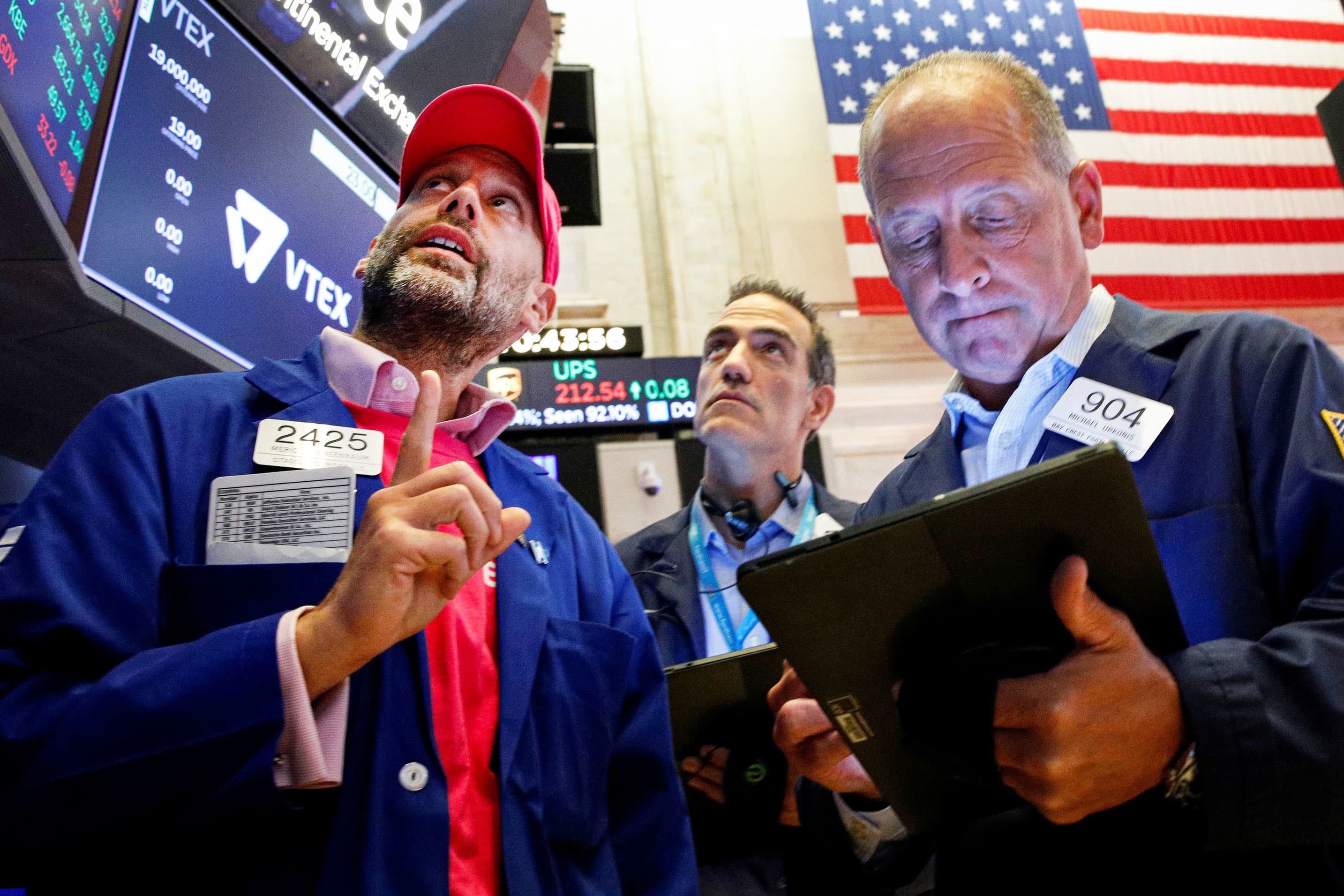Stocks give up earlier gains, Treasury yields decline

U.S. stocks gave up early gains and churned near the flat line on Monday as investors look to build on six-straight months of gains.
The Dow Jones Industrial Average and S&P 500 were both little changed in midday trading, while the Nasdaq Composite added 0.3%. The S&P 500 and the Dow threatened to hit new all-time highs earlier in the session.
Senators introduced a bipartisan infrastructure bill over the weekend, also bolstering optimism on Monday. The bill includes $550 billion in new spending over five years. That’s on top of previously approved funds of around $450 billion.
Senate Majority Leader Chuck Schumer is pushing for the bill to be passed before the chamber goes on recess on Aug. 9. Votes on amendments and a separate budget measure could prove to be hurdles that slow down the timeline for the bill.
The iShares U.S. Infrastructure ETF rose 0.4% on Monday. Caterpillar shares added 1%.
Still, Monday’s tepid performance for stocks came as Treasury yields and oil prices dipped, signaling that some investors may be concerned about economic growth.
“The markets are having a hard time making up their mind as investors look for the next catalyst in either direction,” Canaccord Genuity analyst Tony Dwyer said in a note to clients. “The fear over the Delta variant of the Covid-19 virus and the other side of ‘peak everything’ has investors on edge, while the monetary and fiscal support for the economy coupled with historically strong earnings keeps liquidity high.”
One of the top performers on Wall Street was Square, whose shares rose 10% on Monday after Jack Dorsey’s payment company reported announced a $29 billion all-stock deal to buy Australian installment loan provider Afterpay. Square also reported its second quarter earnings, saying its gross profit rose 91% year over year and that its Cash App has 40 million monthly active customers.
Automaker Tesla was another major winner on Monday, with the volatile stock rising 4%.
The S&P 500 managed to notch its sixth month of gains in July, although volatility increased amid concerns about the economic recovery in the face of the spreading delta Covid variant. It’s the best monthly winning streak for the benchmark since 2018. The Nasdaq Composite and Dow Jones Industrial Average added about 1.2% and 1.3%, respectively, in July, while the broad S&P 500 gained close to 2.3% last month.
The U.S. is averaging more than 72,000 new Covid cases a day the last 7 days, according to the latest CDC data, levels not seen since February this year. However, stocks still traded near all-time highs last week even as concerns about the delta variant grew.
“At the end of the day, the stock market is driven by two things: 1) Earnings and 2) Multiples and until COVID (or China) begins to negatively impact one or both of those metrics, stocks can stay resilient,’ Tom Essaye, founder of Sevens Report, said in a note.
An overall strong earnings season continues to be a tailwind for the market. So far, 88% of S&P 500 companies that have reported have topped EPS estimates, according to FactSet. For the second quarter, the S&P 500 is on track to post earnings growth of 85.1%, which would be the best growth rate since 2009, according to FactSet.
The first trading day of August comes with more big earnings on the way. Lyft, Amgen, Uber, CVS Health, General Motors and Roku all report quarterly results this week.
The final July reading for the IHS Markit manufacturing purchasing manager’s index came in at 63.4 on Monday, up from the 63.1 preliminary reading and June’s result of 62.1. With PMI, readings above 50 represent expansion in a sector. However, a similar metric from the Instituted for Supply Management dipped slightly in July.
Concerns about inflation have plagued the market, however a key inflation indicator showed lesser-than-feared price pressures on Friday. The core personal consumption expenditures price index rose 3.5% in June year-over-year. It marked a sharp acceleration in inflation, but came in slightly below a Dow Jones forecast of a 3.6% jump.
Also on Friday, U.S. second-quarter gross domestic product accelerated 6.5% on an annualized basis, considerably less than the 8.4% rate of growth expected by economists polled by Dow Jones.
On the earnings front, Amazon sank nearly 7.6% Friday after the tech giant reported its first quarterly revenue miss in three years and gave weaker guidance. The stock was little changed on Monday.




